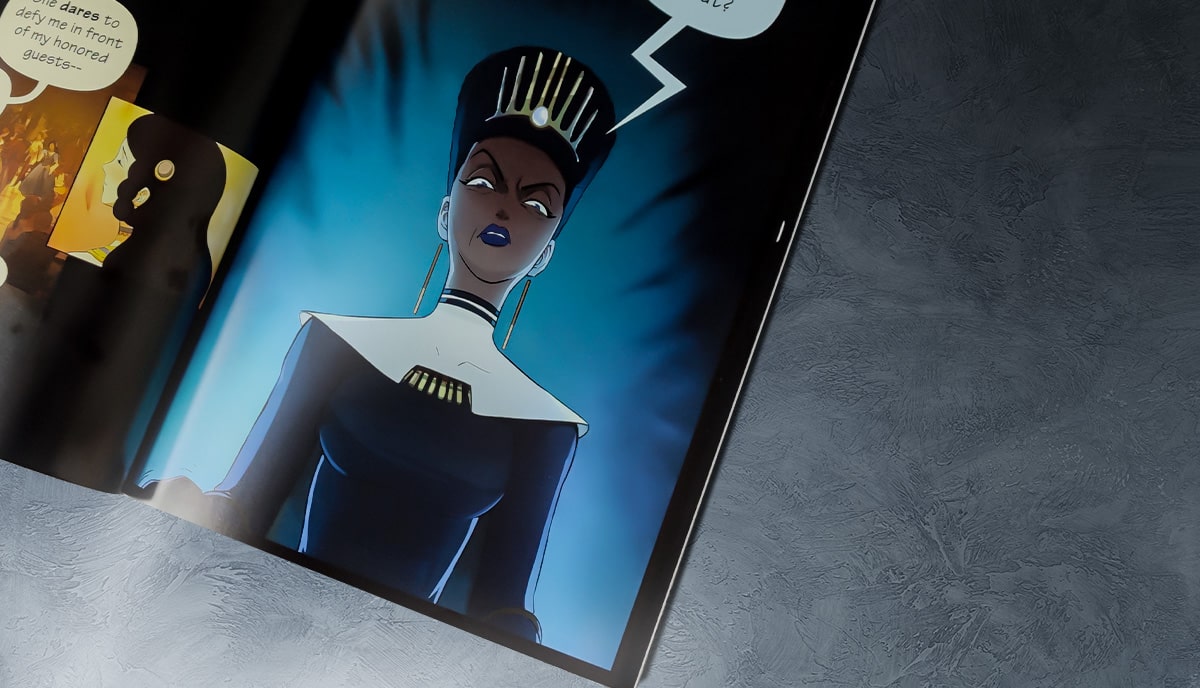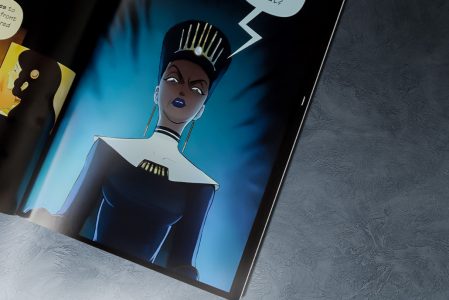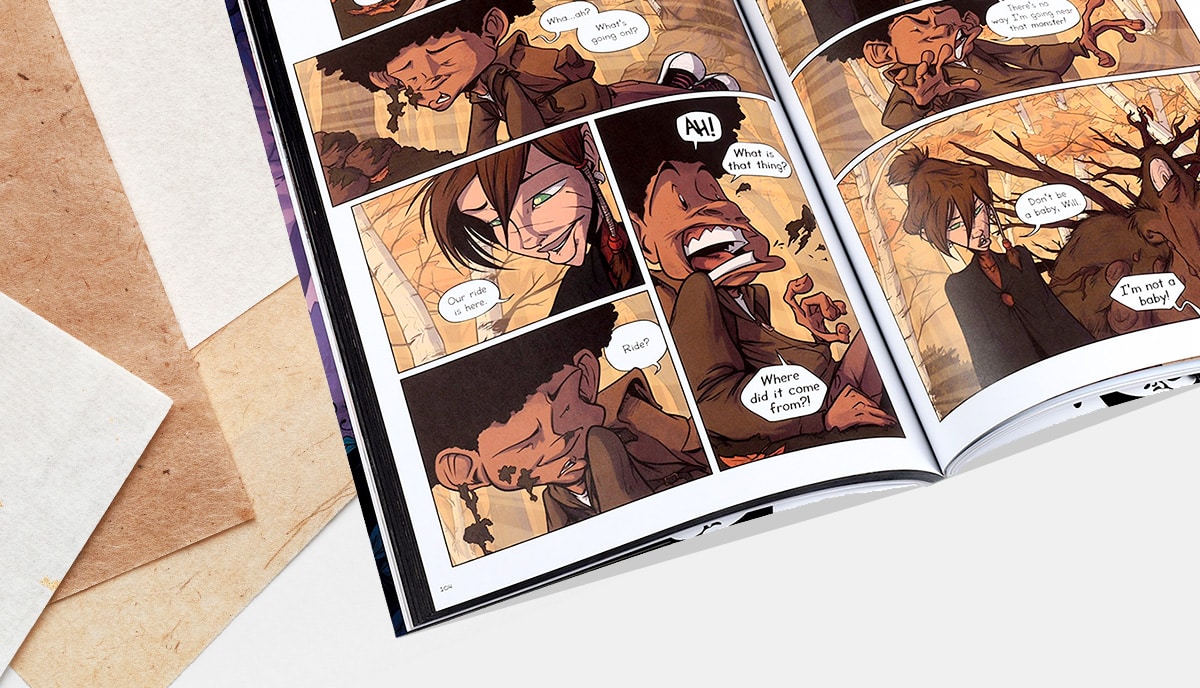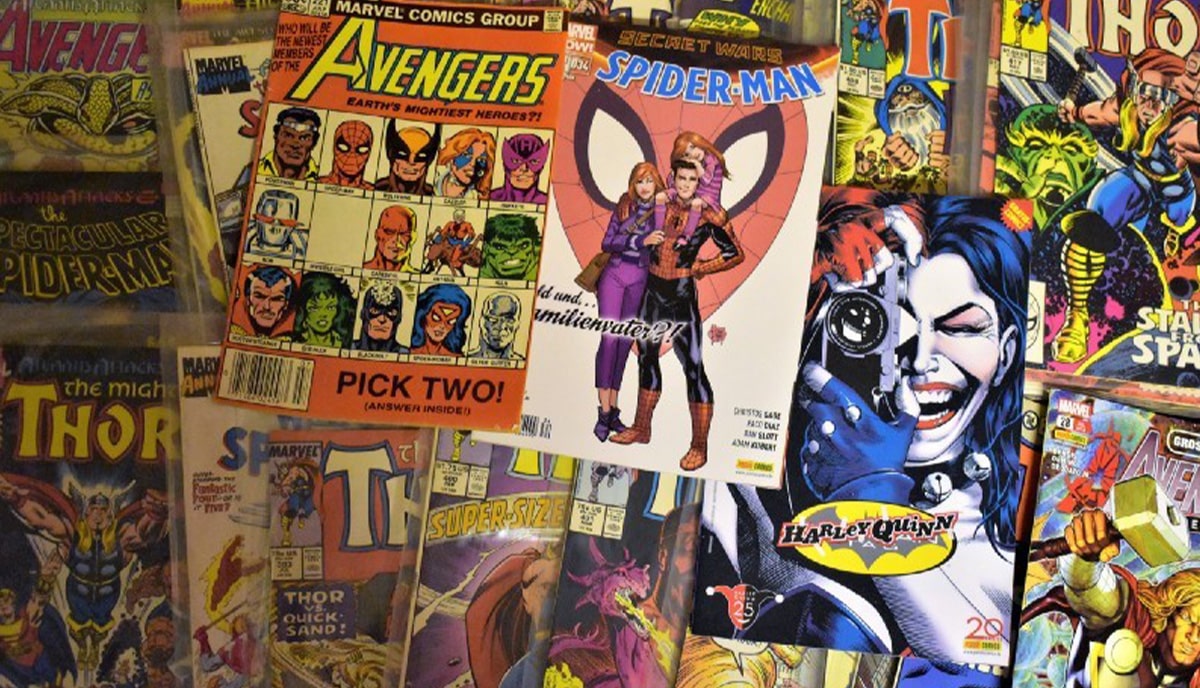Every comic book needs a villain. And we all recognize the most famous and enduring comic book bad guys. But when you're creating your own comic book, how do you make sure that you invent a villain that your readers will love to hate? In this post, we explore what makes an effective comic book villain.

Your comic book villain represents the exact opposite of your hero or heroine. They are the antagonist to your protagonist. They have their own motivations and needs, their backstory and their goals. Often, these are similar to those of the protagonist but in a twisted way that makes them wicked rather than good. Everything they try to do challenges the protagonist of your comic and drives them into conflict. As the protagonist sees the villain as standing in the way of their objectives, so the villain sees your hero or heroine as an obstacle in the path toward achieving their desires. This, in a nutshell, is the essential relationship between the villain and the hero or heroine; between the protagonist and the antagonist.
What are the traits of an effective villain?
But the villain isn't there just to make life difficult for your protagonist. They serve a much deeper purpose. Even though the expression that they give to their desires is often perverse, wicked, and cruel, they must have enough in common with the hero or heroine to make them uncomfortable at a deep, interior level. So, they may expose the hero or heroine's weakness, pride, or deepest fears. In doing so, and in confronting the protagonist, the villain puts them in a position from which they can only find the power or skills to escape by facing up to their own dark side and overcoming it. In this sense, the best and most effective villains are always symbolic of the hero or heroine's inner struggle and transformation; their personal dark side. With that in mind, let's look at the five most important traits of an effective comic book villain.
They have a deep link with the hero or heroine.
The most effective comic book villains have deep links with the hero or heroine. They may be a family member turned bad, or they may have hurt the hero or heroine or someone they love in the past; they could also be the hero or heroine's ex-lover or best friend. But in some sense, it's this closeness to the protagonist that gives the villain their power over them and that foreshadows the final conflict which will force the hero or heroine's transformation.
Effective villains think they're the good guy.
The one big mistake all comic book villains must make is a moral one. They may go around killing and hurting everyone and taking no prisoners in their lust for power or revenge, but in their perverse way, they believe they're doing good; they think that they are the hero! An effective villain has their own deep motivations and needs, and they are often driven by a desire to compensate themselves for some past injustice, grievance, or suffering for which they feel they rightly deserve justice. In the best stories, that past injustice, grievance, or suffering is directly related to the protagonist, their family, or their friends.
A powerful match.
Everyone knows that bullies are weak and cowardly at heart. But a good comic book villain isn't a bully. They must be a worthy adversary—every bit as intelligent, driven, powerful, and resourceful as your protagonist. Effectively, the match must be equal. That's why it's so tough for your hero or heroine to overcome the villain; because they have finally met their match. That's also why the only way the protagonist can win in the end is by experiencing inner change, the kind of internal transformation that comes from self-awareness and acceptance of their weaknesses and faults. Because that is the one thing that a villain doesn't have: self-awareness. And that egoism is what will ultimately be their downfall.
A three-dimensional character.
When you plan your comic book villain, if you want them to be truly effective, then you must make sure that they're as fully “fleshed out” as your hero or heroine. They need their own biography, their own backstory in which we discover the roots of their inner motivations and how they came to be who they are; and, of course, the deep and important link that they have with the hero or heroine.
Villains must be disturbingly likeable.
If you create a comic book villain who is completely lacking in charm, has no sense of humor, and is simply the personification of all that's hateful, you risk losing a lot of the dramatic tension which will drive your story. Remember, the most popular villains are those that hold a strange and even slightly disturbing attraction for the reader as much as for the hero or heroine. So mix in a few likable traits, a sense of irony, or at the very least a comical element which makes readers laugh as much as they dislike the villain and their motives. If you can create a villain for whom the reader also feels some sympathy, then you are onto a sure-fire winner.
5 Top Tips for Writing a Great Villain for Your Comic Book
So, now that we've examined the traits that go to make a truly engaging and effective comic book villain, let's explore several helpful techniques to get you there; to guide you toward the creation of an effective antagonist who will be a match for your hero or heroine and whom your readers will love to hate.
Write a detailed backstory.
If there's one thing that your comic book villain needs to be other than villainous, it's believable. Almost everything that makes an effective villain stems from their personal history, from their backstory. Their motivations and goals, how their view of the world got twisted, why they hurt so bad deep inside and the source of their resentment, their sense of entitlement and their lack of empathy, their close connection to the hero or heroine: all of these things are to be discovered in their backstory. Your readers needn't necessarily know all the details, but you need to. So, before you start writing your story or creating character sketches and other artwork, make sure that you spend enough time writing your villain's backstory. Go into as much depth and detail as you can. The better you know your villain, the more effective they will be.
Have sympathy with the devil.
Remember what we said about the villain's view of themselves? They don't think that they're the bad guy. They have no idea they're the villain! An effective villain genuinely believes that all their wickedness and villainy are both justifiable and necessary to achieve an important goal. To create a comic book villain that the readers can believe in, you'll need to develop empathy for your bad guy; you'll need to take their side when they're on stage, so to speak, and get inside their twisted psychology. If you don't, you'll find that you write a villain who comes across as two-dimensional or tongue-in-cheek.
Let their motivation drive their goals.
In exactly the same way that your hero or heroine's deepest motivation informs and drives all their aims and ambitions, so must your villain's motivation drive their goals. Not even the nastiest villain is evil just for the sake of it. There's a reason why they're behaving that way and it's usually pretty deep. To keep them going it has to be a powerful motivating force. So, in every scene you write or draw that has your villain in it, ask yourself: why are they behaving like this? Why is this goal so important to them? What's driving their actions?
Compare and contrast.
One of the most powerful techniques to create a truly effective comic book villain is to compare them and contrast them in mirroring scenes with your hero or heroine. So, set up scenes for your villain either set in the same locations, involving similar conflicts or obstacles, or with the same secondary character or characters, that “mirror” preceding or succeeding scenes with your hero or heroine and show how they each respond differently and act according to their motivations and goals in those scenes to bring about different outcomes. Constructed with care, these scenes can do a lot of work, showing the similarities and fundamental differences between your hero or heroine and the villain, which in turn adds depth to both.
Drip-feed their backstory.
While you need to know everything there is to know about your villain—and your protagonist—before you start your comic, the reader should be kept guessing and trying to figure out the details. Part of the fun and intrigue of reading a comic book story is engaging with the images and the text to piece together everything that's implied rather than made immediately explicit. You can add a lot of dramatic tension and develop the effectiveness of your villain by holding back information until it will have the most impact. So, don't “info dump” your villain's backstory all at once. Only reveal what the reader needs to know and only when the reader needs to know it. Otherwise, keep them guessing.
We hope that's been interesting and helpful to you. With these insights and techniques under your belt, you're all set to create a truly captivating and effective comic book villain that you should have as much fun writing and drawing as your readers will following their attempts to reach their goals and thwart your hero or heroine. The key takeaway, is to make your villain as deep and real a character as your protagonist.
Talk to us!
Whether you're just planning your comic book or you're preparing your completed files, we're always happy to hear from you either to chat through how we can help you realize your comic book project or to give you a personalized quote on printing. Get in touch. We can't wait to be part of your next comic book adventure!









